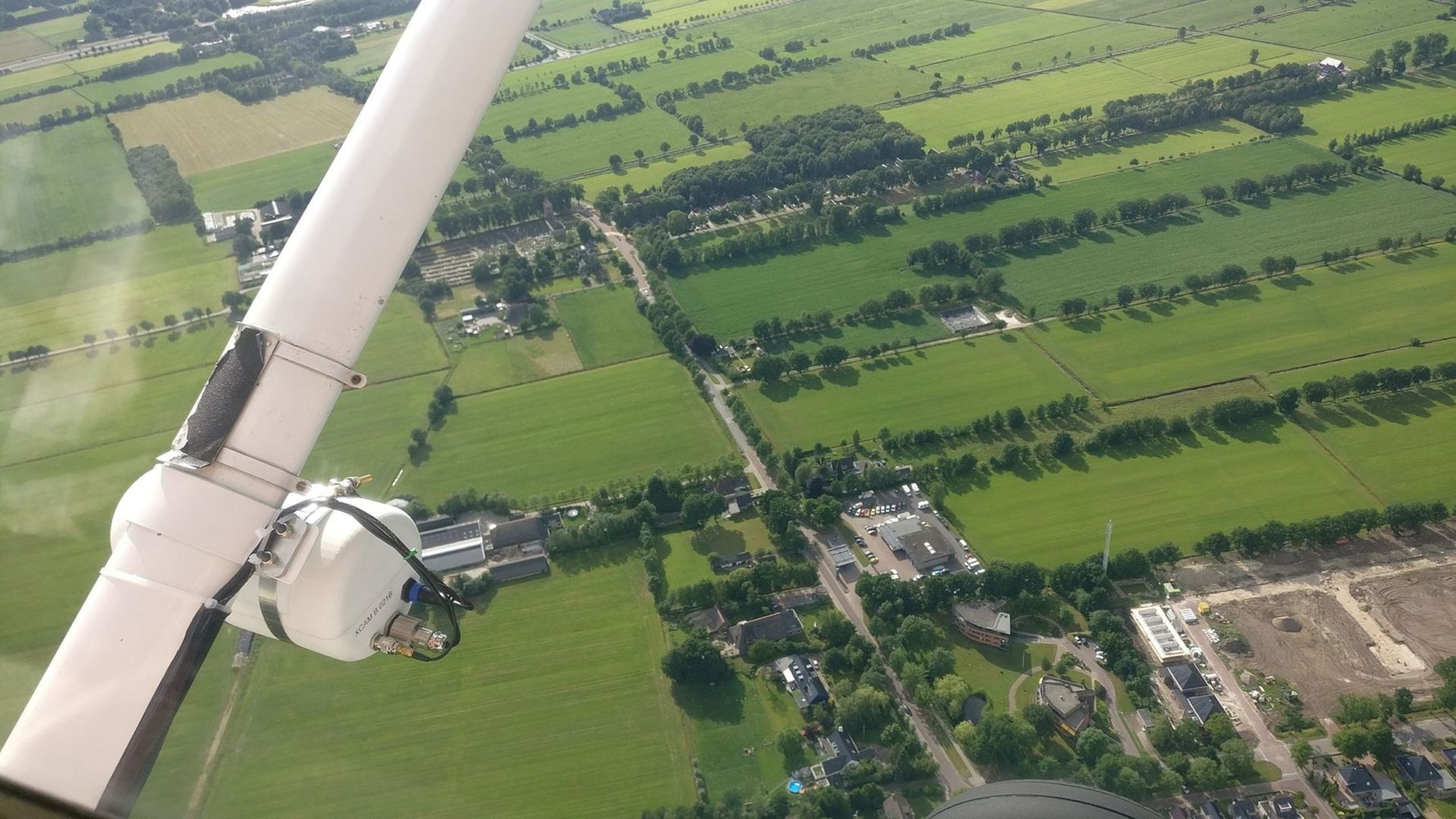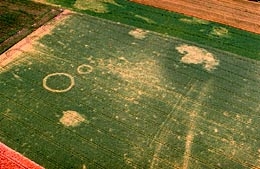- Home
- Prospecting
- Film photography and digital photography
Classic, silver-based photography
Experience shows that it is not necessary to have expensive equipment. You'll be better off with a sturdy, 35mm camera with a set of lenses and a reliable shutter. Semi-automatic cameras, which set the speed automatically and display the F-stop in the viewfinder, are preferable. A new format, Advanced Photo System, or APS, has recently come onto the market, but seems unsuitable for aerial photography.
You should shoot at a minimum speed of 1/500 sec., but 1/1000 sec. is useful at low altitudes or when using a telephoto or zoom lens. It is best to be able to lock the shutter speed and to block the focal length at infinity. Motorized cameras offer a number of advantages. For 35mm cameras, normal lenses — 45mm and 50mm — are the most suitable. Zoom and telephoto lenses are useful near cities, where regulations require higher-altitude flying, or for photographing small sites. Often, aerial archaeologists take two or three cameras with them, preferably the same type, with different lenses and film types for each.
With today's emulsions, filters are not essential at low altitudes. Above 1,000 or 2,000 meters, a UV filter will protect the lens and diminish excess ultraviolet rays.
Digital cameras look much like silver-based cameras. The film is replaced by an electronic sensor, in the form of a matrix or a photodiode array. The energy received by the photodiodes of the sensor is transformed into electronic signals.
For aerial photography, a 6 megapixel digital reflex camera (35mm type) should be used, because of its ease of use (easy to change the shot settings), shutter speed, and image quality. On the other hand, you will need to take along high-capacity memory sticks, and enough of them, or else have a hard disk on board to which you can download the image files. Don't forget batteries — digital cameras use a great deal of energy.
Yellowing crops reveal the floor plan of a huge Gallo-Roman villa Vieux-Rouen (Seine-Maritime).
Yellowing crops here reveal many filled-in pits and circles dating to the Bronze Age Cavillon (Somme).
Digital images
Digital images — whether obtained by scanning silver-based photographs or acquired directly with a digital camera — offer the archaeologist new ways to examine images thanks to the computer. Take for example the various ways in which the image can be modified — changing the contrast, modifying the density, displaying a single color channel, selecting part of an image, sharpening, simultaneously displaying several images for comparison or superimposing them, etc. All of these manipulations contribute to a better interpretation and analysis of the objects being examined.
Combining digital images with a GIS allows information from different sources to be compared and localized, and allows digital images to be superimposed and integrated.
Both scanned photographs and images taken directly with a digital camera are extremely important for the protection, exploitation and distribution of scientific data.
High-definition scanning means that original documents can be worked on, but are spared handling that could damage them. In addition, scanning preserves non-permanent silver-based information. At lower-resolutions, scanning allows large archives to be organized and managed, thus facilitating researchers' work. The arrival of web technology means these images can be distributed to the wides possible audience.
Aerial photograph of the Gallic house at Verberie (Somme), prior to digital retouching.
The same photo, after modifying the color contrast. The postholes that held up the exterior wall are now more visible.




